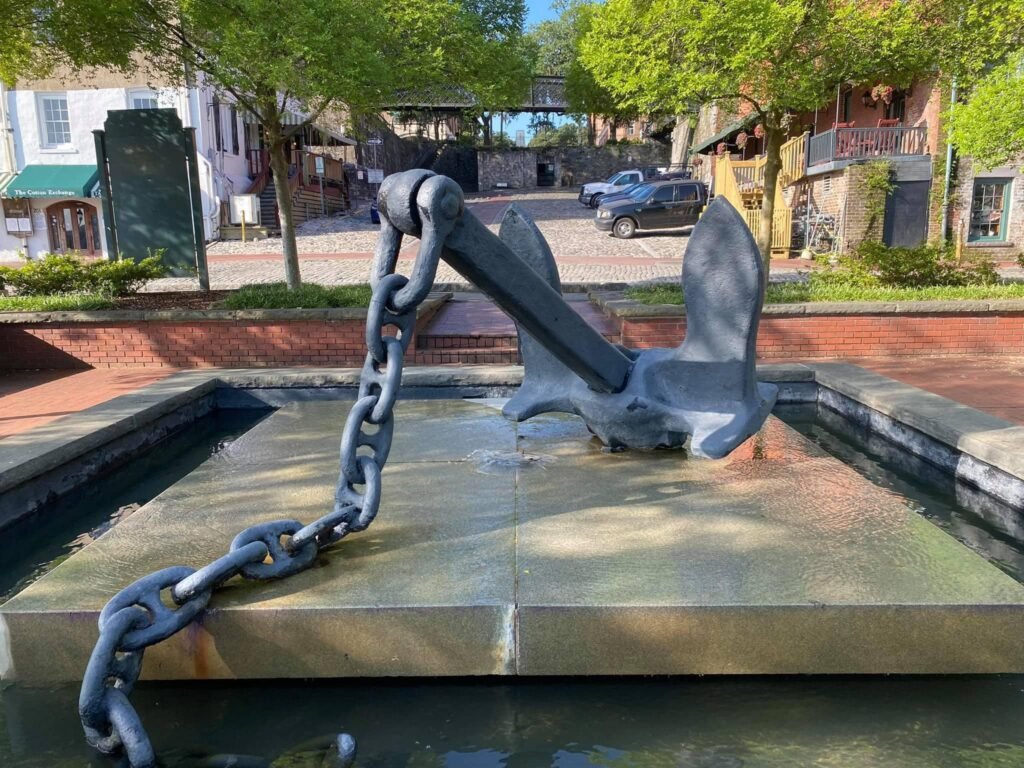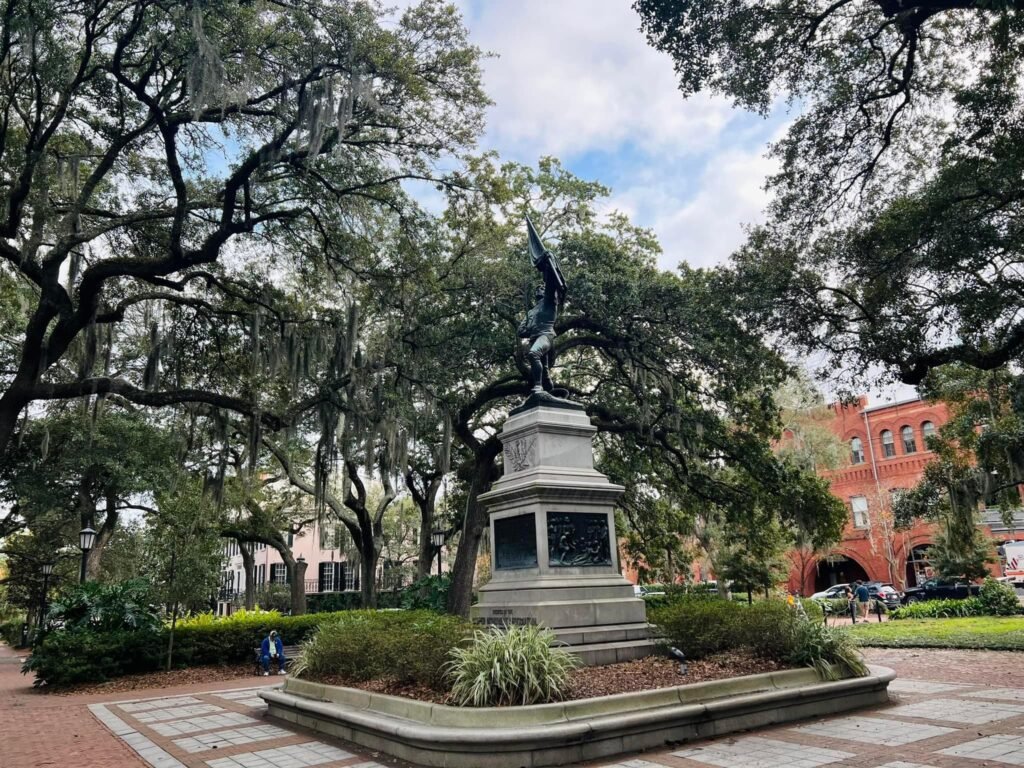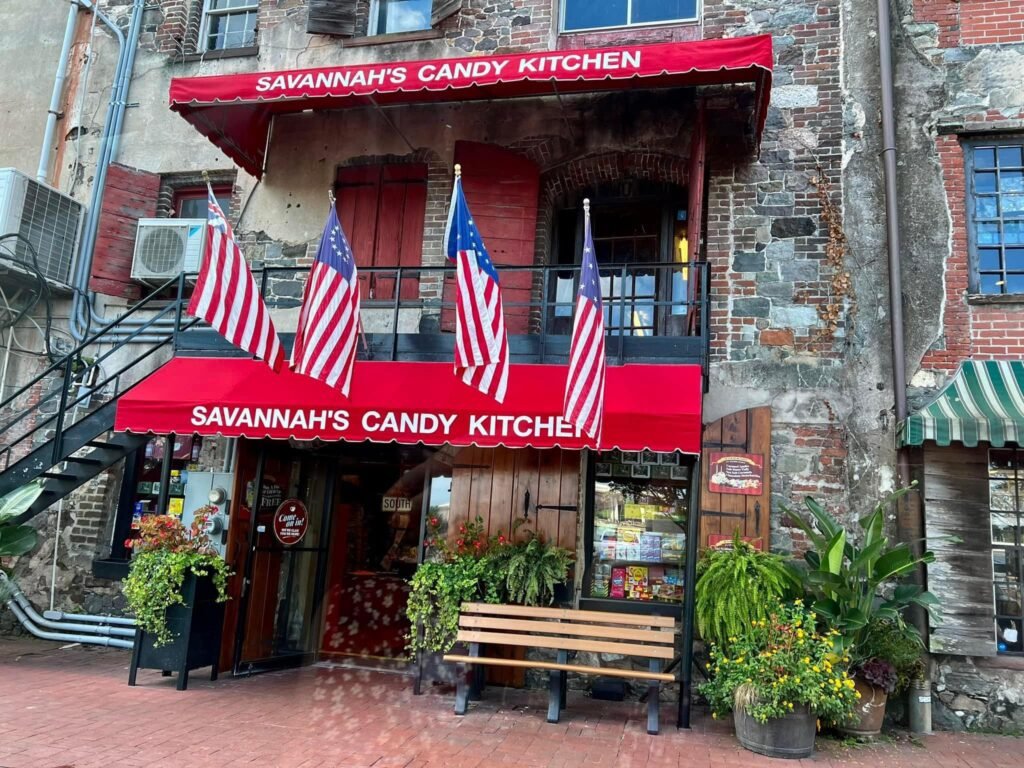Introduction:
Savannah, Georgia, is a city rich in history, and its historic area is the hub of its legendary past. Discovering the rich tapestry of culture, architecture, and history that makes Savannah an authentic Southern gem, I explore the three main regions of the city’s historic district. My heart feels entrancingly peaceful now. Visit us and have fun.
Table of Contents


River Street and Factors Walk: The Bustling Waterfront
The Evolution of River Street
River Street has been a fixture of Savannah since its inception. Founded in 1733, this area was Savannah’s main port, playing an important role in the city’s development. By the mid-1800s, Savannah had become the world’s leading cotton exporter, with warehouses on River Street bustling with activity. Today, River Street is a vibrant tourist destination, with a mix of shops, restaurants, and entertainment, all while maintaining its historic charm. I closed my eyes in front of River Street and drifted off into fantasy.

Factor’s Walk: From Cotton to Cobbles behind River Street is Factor’s Walk, a network of iron bridges and cobbled paths that once served as a commercial center for cotton factors. These rockers set the global price of cotton, working from the top floors of waterfront warehouses. The stones that pave the area were originally used as ballast on ships, coming from places as diverse as Madeira Island and the British Isles. Now, Factor’s Walk is a pleasant locale, home to boutique shops and cozy cafes, where history and commerce continue to intersect.
Savannah’s Squares and Forsyth Park: The Cultural Heart
The Squares: Savannah’s Living Rooms
Savannah’s 22 squares are the “crown jewels” of the city, each with its own story and character. These squares were part of James Oglethorpe’s original town plan, designed to serve as communal spaces for militia training and public gatherings. Today, they are beloved public “living rooms,” where locals and visitors alike enjoy the shade of live oaks and the beauty of azaleas and camellias.

Forsyth Park: A Grand Victorian Statement
Established in the 1840s, Forsyth Park is a sprawling 30-acre park that serves as a grand Victorian statement at the southern edge of the historic district. The park is anchored by the iconic Forsyth Fountain and is a hub for community events, from concerts to farmers markets. It’s a place where the community comes together, surrounded by the natural beauty and historic architecture that defines Savannah.

Eastern and Western Edges: The Diversity of Savannah’s Historic District
East Broad Street: A Residential Showcase
The eastern edge of the historic district is marked by East Broad Street, a residential area that showcases Savannah’s architectural evolution. Here, visitors can wander through houses spanning centuries, offering a visual history reading of the city’s development.



Martin Luther King Jr. Boulevard: A Cultural Corridor
On the west end, Martin Luther King Jr. Boulevard stands as a testament to Savannah’s African American heritage. The Ralph Mark Gilbert Civil Rights Museum and other cultural landmarks along this corridor highlight the city’s role in the civil rights movement and its ongoing commitment to preserving and celebrating its diverse history.

Conclusion
Savannah’s historic district is more than just a collection of buildings and streets; It is a living, breathing entity that tells the story of a city that has played an important role in American history. From the bustling waterfront of River Street to the quiet squares and splendor of Forsyth Park, Savannah invites exploration and discovery. It’s a district where every step takes you through a layer of time and every sight gives you a deeper appreciation for this charming southern city.



